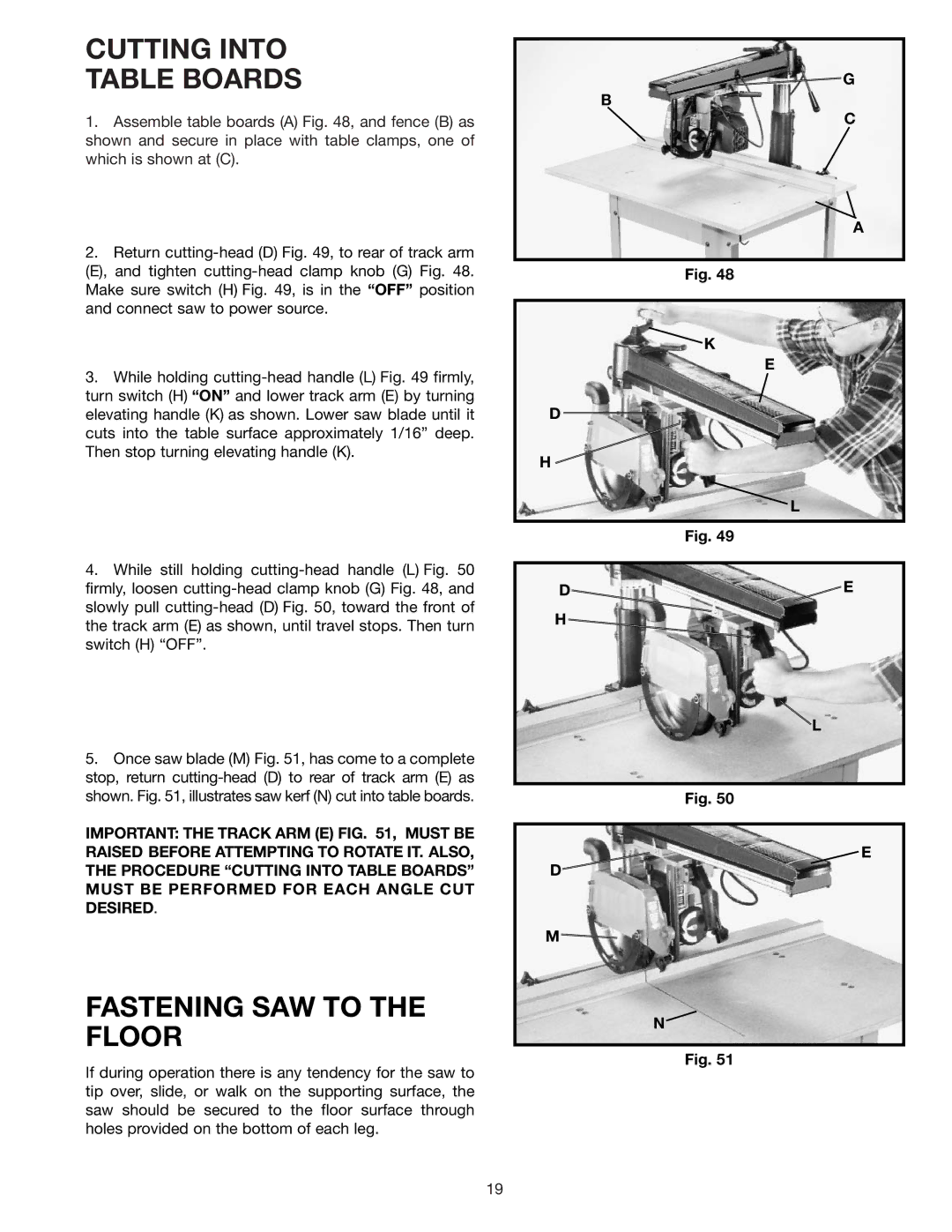
CUTTING INTO
TABLE BOARDS
1.Assemble table boards (A) Fig. 48, and fence (B) as shown and secure in place with table clamps, one of which is shown at (C).
2.Return
3.While holding
4.While still holding
5.Once saw blade (M) Fig. 51, has come to a complete stop, return
IMPORTANT: THE TRACK ARM (E) FIG. 51, MUST BE RAISED BEFORE ATTEMPTING TO ROTATE IT. ALSO, THE PROCEDURE “CUTTING INTO TABLE BOARDS” MUST BE PERFORMED FOR EACH ANGLE CUT DESIRED.
FASTENING SAW TO THE FLOOR
If during operation there is any tendency for the saw to tip over, slide, or walk on the supporting surface, the saw should be secured to the floor surface through holes provided on the bottom of each leg.
![]() G
G
B
C
A
Fig. 48
![]() K
K
E
D
H
| L |
| Fig. 49 |
D | E |
H |
|
![]() L
L
Fig. 50
![]() E
E
D
M![]()
N
Fig. 51
19
